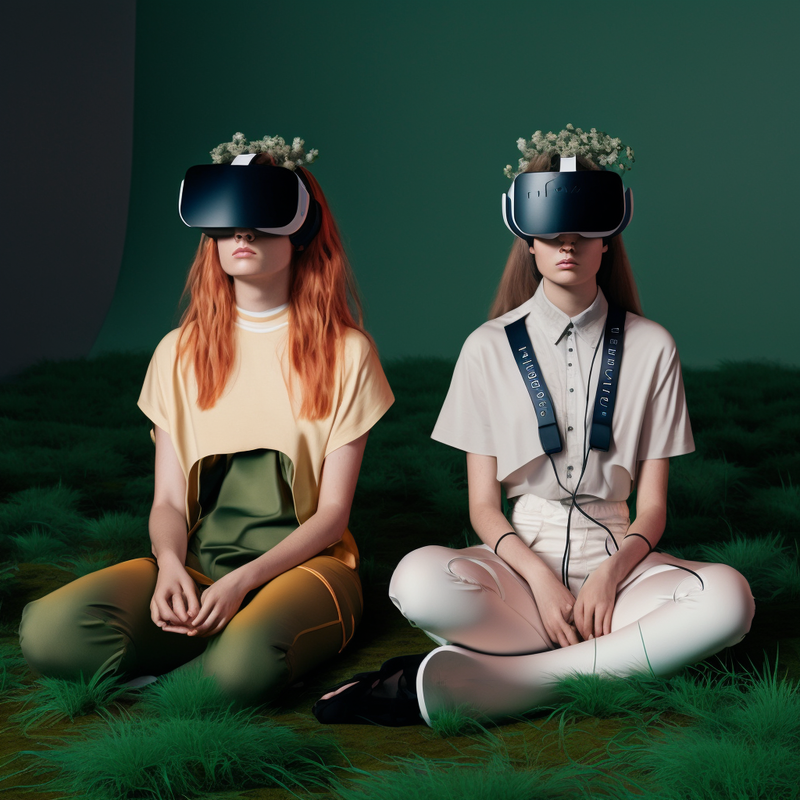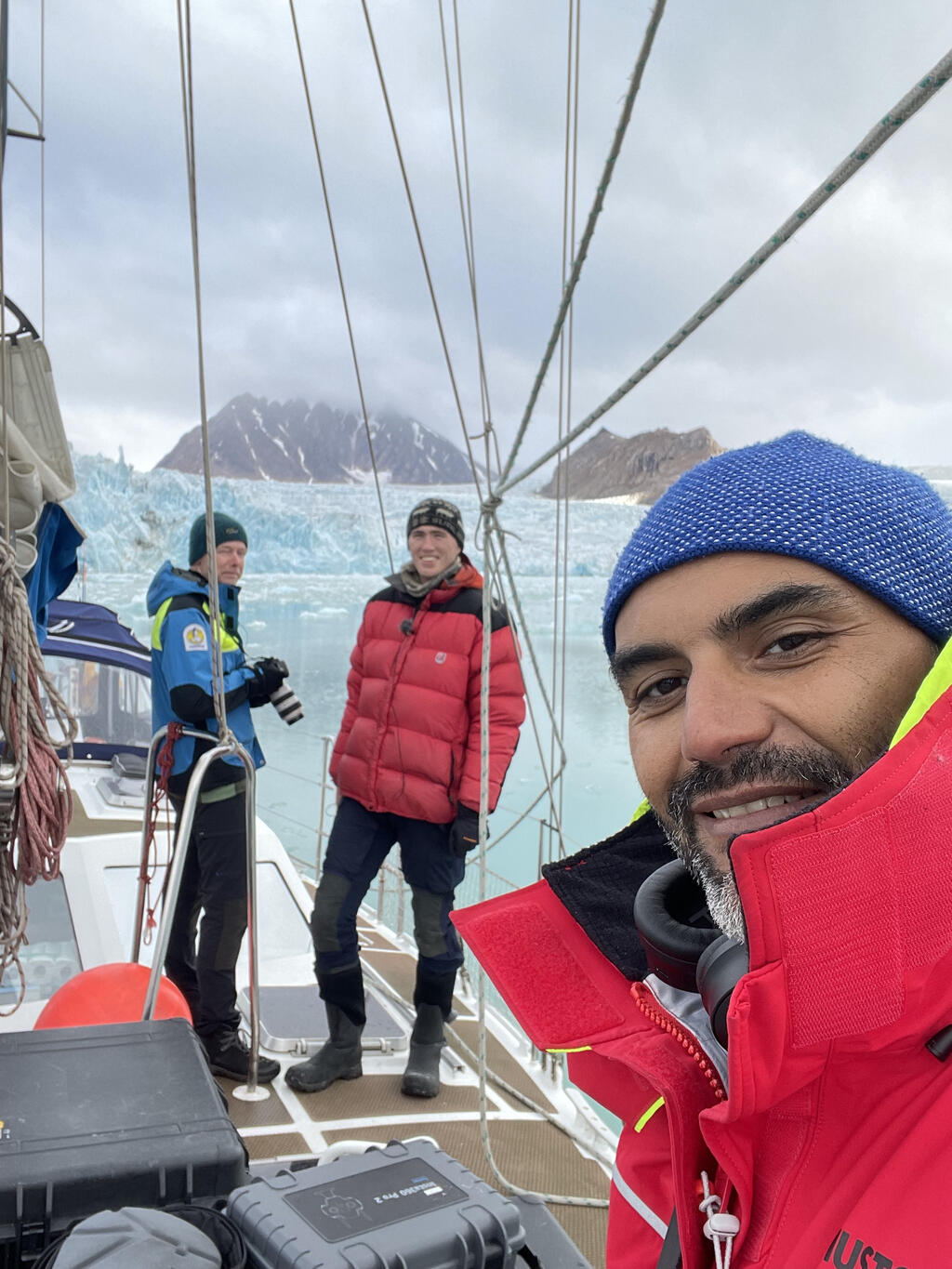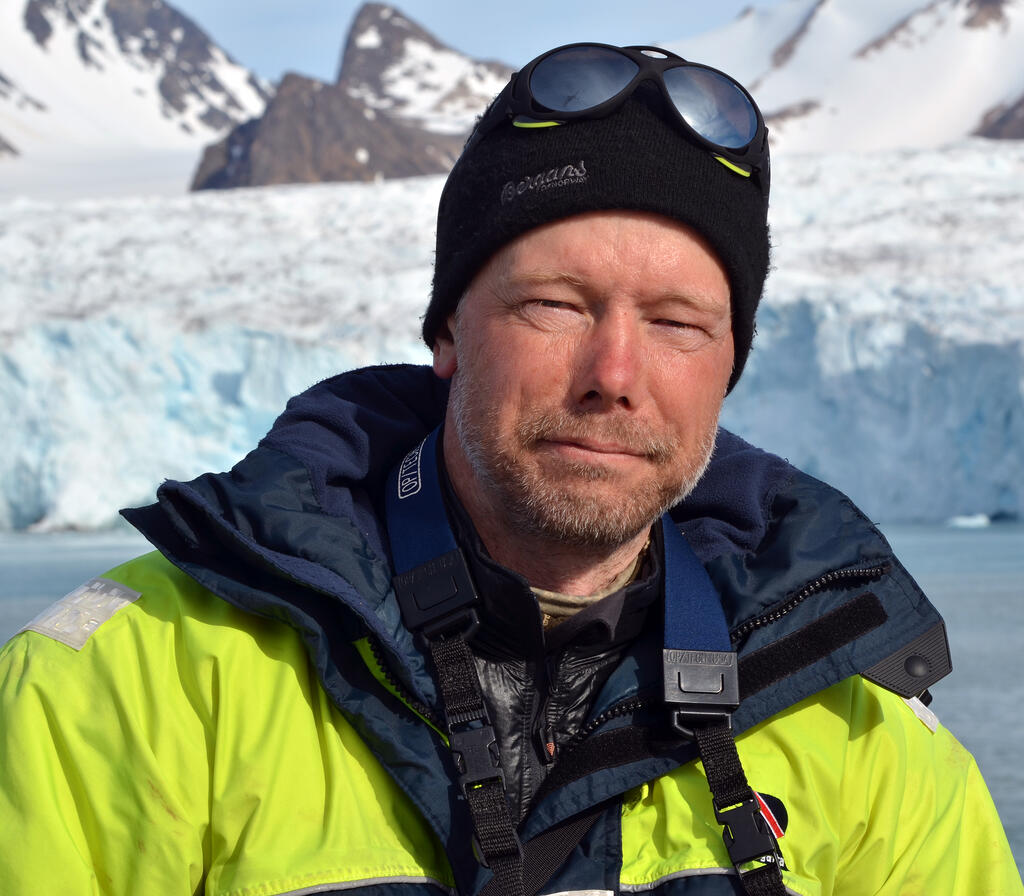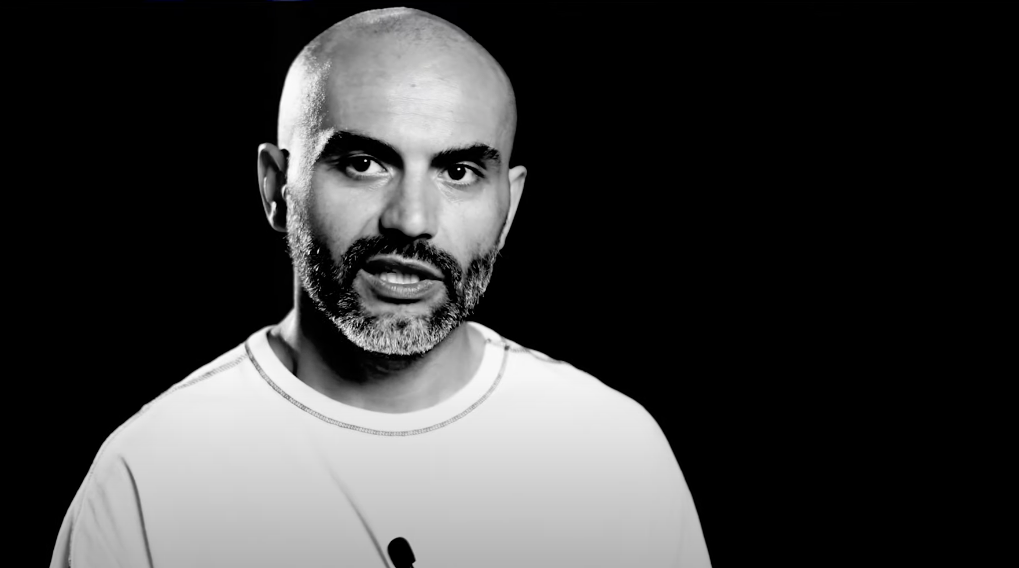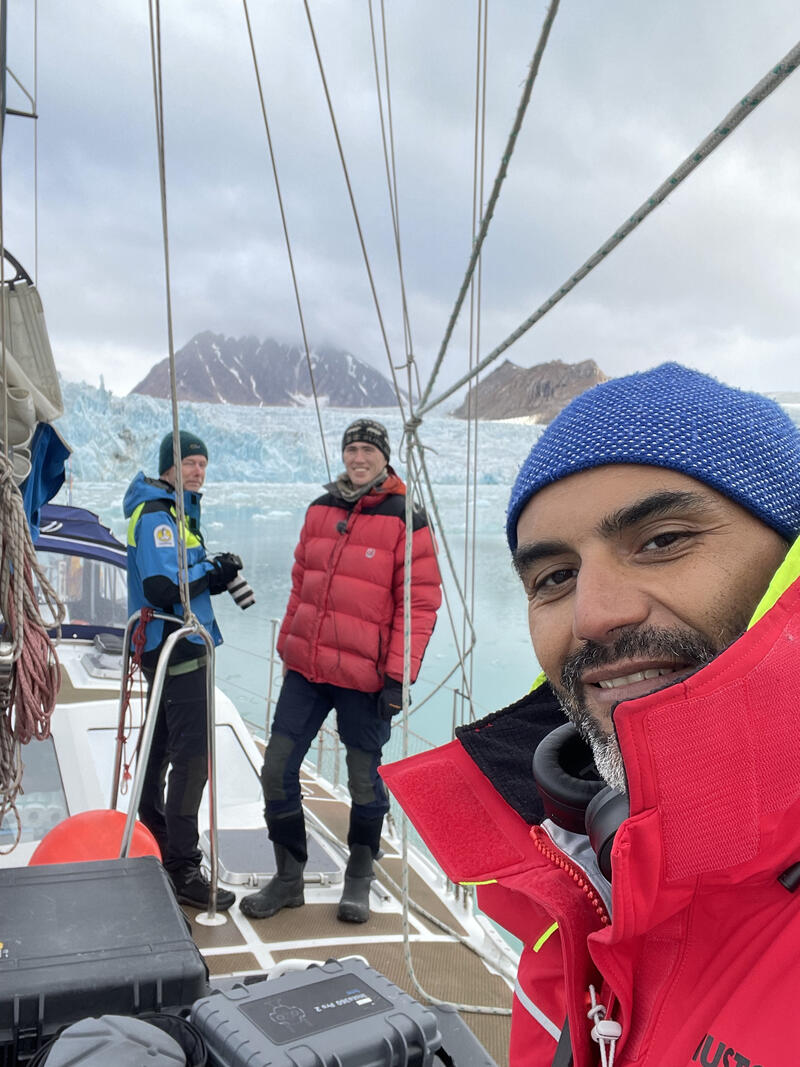Research deepens the experience of climate change with storytelling & visualizations
Photographic methods, visualization, storytelling, VR and climate change in an arctic environment. All this is the content of the research project Extended Rephotography: immersive visualization of climate change. Among other things, it explores how new technology can drive innovation to better communicate climate change.
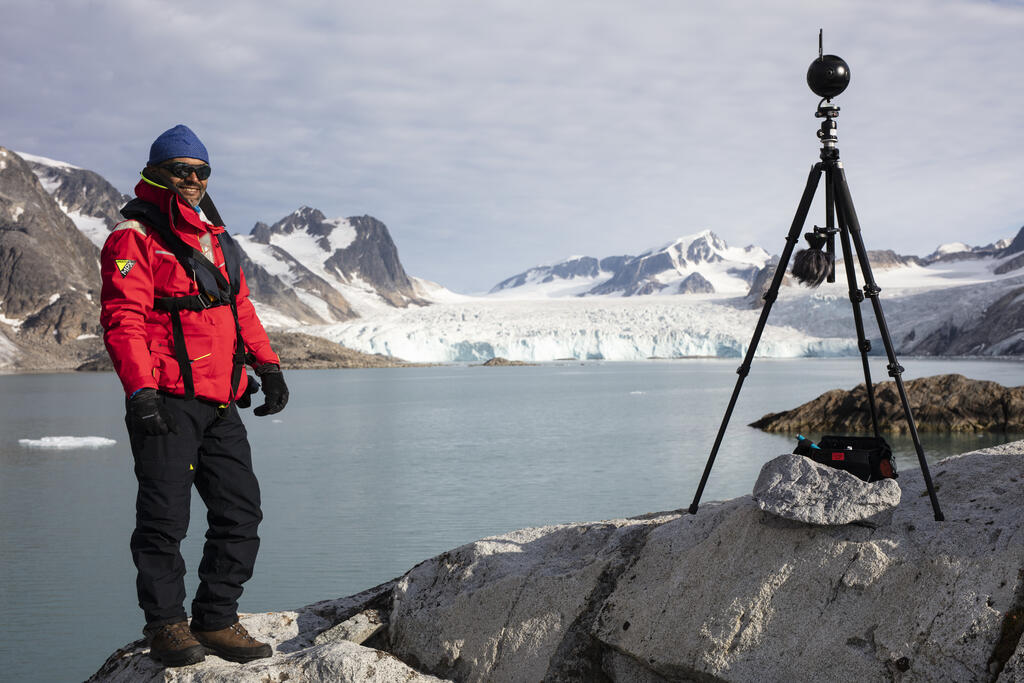
Gorki Glaser-Müller, project manager, Visual Arena, on Svalbard during the expedition for the project. On the right is the 360° camera that was used.
The starting point for the research project is visual methods and how to use them to tell a story about people's relationship to nature and the environment. For Tyrone Martinssons, researcher and teaching professor in photography at HDK-Valand, this has always been the common thread. As early as 2003, he completed his dissertation with a thesis on how we can use digital tools to work with historical images. This was exemplified through a study of photographer Nils Strindberg's depictions of Andrée's polar expedition from the late 1800s. The Extended Rephotography research project is based on precisely these historical images. Martinsson and his research team have subsequently developed techniques for re-photographing, that is, re-photographing the same subject in the same place by searching for the exact camera points of previous photographers. An interesting method from an artistic perspective, but which, due to the choice of motif and location, adds a dimension of scientific interest.
"I work with environmental and climate issues and glaciers have always been a basic framework in this. When you put the two images of glaciers in northwestern Svalbard taken 120 years apart next to each other, the change is hard to deny," says Tyrone Martinsson, professor of photography, HDK-Valand, University of Gothenburg.
The focus area is northwestern Spitsbergen on Svalbard. As early as 1596, Barentsz and the Dutch explorers made notes from the area. The unique thing about this part of Spitsbergen is that we have documented observations for roughly 400 years from 1596 until today. Already from the 17th century we have both texts and images and from 1861 also photographs.
"This gives us a long story about the landscape which, when we can create a time series from both image and text, offers an opportunity to see directly how changes in the landscape start to become noticeable to how they accelerate and become very clear. The techniques for visualization we have today allow us to convey this in a completely new way that creates a unique presence and clarity," says Tyrone Martinsson.
During the expedition that took place within the project 2022, an area of Svalbard was 3D-scanned and filmed in 360° and 180° to create a visual experience demonstrating climate change through VR, 3D models and storytelling. A central part of the project is to explore how to work with these tools to provide new perspectives and new experiences of part research dealing with climate change and part innovative visual storytelling. Here, cross-disciplinary research and innovative visual storytelling meet.
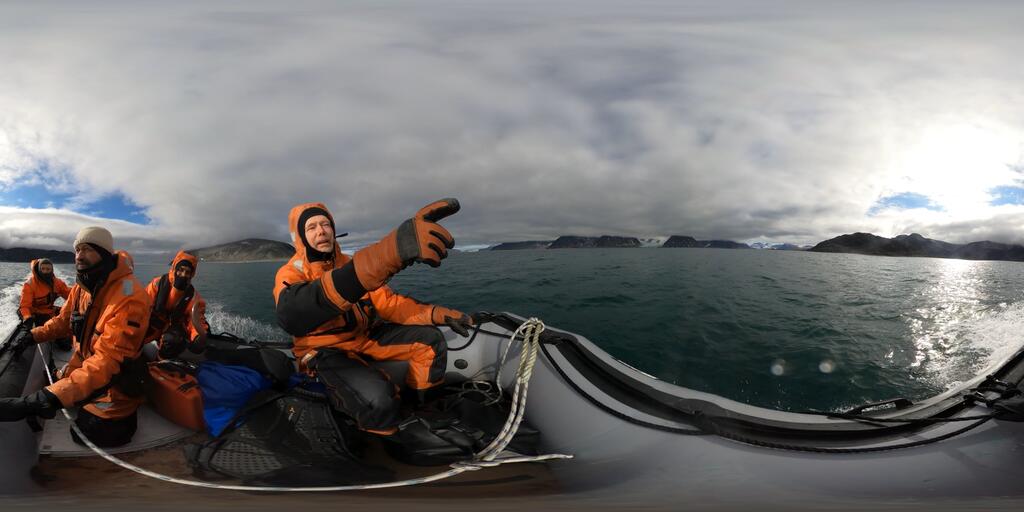
From left: Tyrone Martinsson, professor of photography, HDK-Valand, Gothenburg University and Gorki Glaser-Müller, project manager, Visual Arena made an expedition to Svalbard in the summer of 2022 to film and photograph in 180 and 360 degrees.
Research with many perspectives
The fact that the research deals with both glaciers and photography makes the work interdisciplinary, or transdisciplinary, which means that the unique perspectives of different disciplines are added for a broader and deeper understanding of the content. In addition to the artistic perspective via Tyrone Martinsson, Gothenburg University is represented by pedagogy via professor Lena Pareto and digital humanities (GRIDH) via docent Jonathan Westin. In addition, collaboration with natural science discipline takes place via Erik Mannerfelt, doctoral student in glaciology at the University of Oslo.
The research project is also a collaborative project between different organizations and partners, in addition to the University of Gothenburg, the Norwegian Polar Institute, Universeum, University of Plymouth and Visual Arena, Lindholmen Science Park which develop XR technology, i.e. Extended Reality, are included. Gorki Glaser-Müller, who works as a project manager at Visual Arena, has been part of the research team from the start. He is also an alumnus of HDK-Valand's film education and works in parallel as a director and screenwriter.
- The new technology can create conditions for the visitor to become mentally accessible to the facts. That climate change is melting glaciers in the Arctic is something most people already know, but still don't realize. By experiencing the Arctic, we can create a more personal connection to the place. That you find it beautiful and fascinating - and perhaps you are more willing to do something to change the conditions for this environment. There is a purpose to the work. That's where I come in as a storyteller and my tools to create empathy for places and practice characters. Although it was personally a shock to see how much the glaciers are melting and how much wildlife has disappeared, hope is one of our important messages to convey with this visual experiment!
says Gorki Glaser-Müller, project manager, Visual Arena.
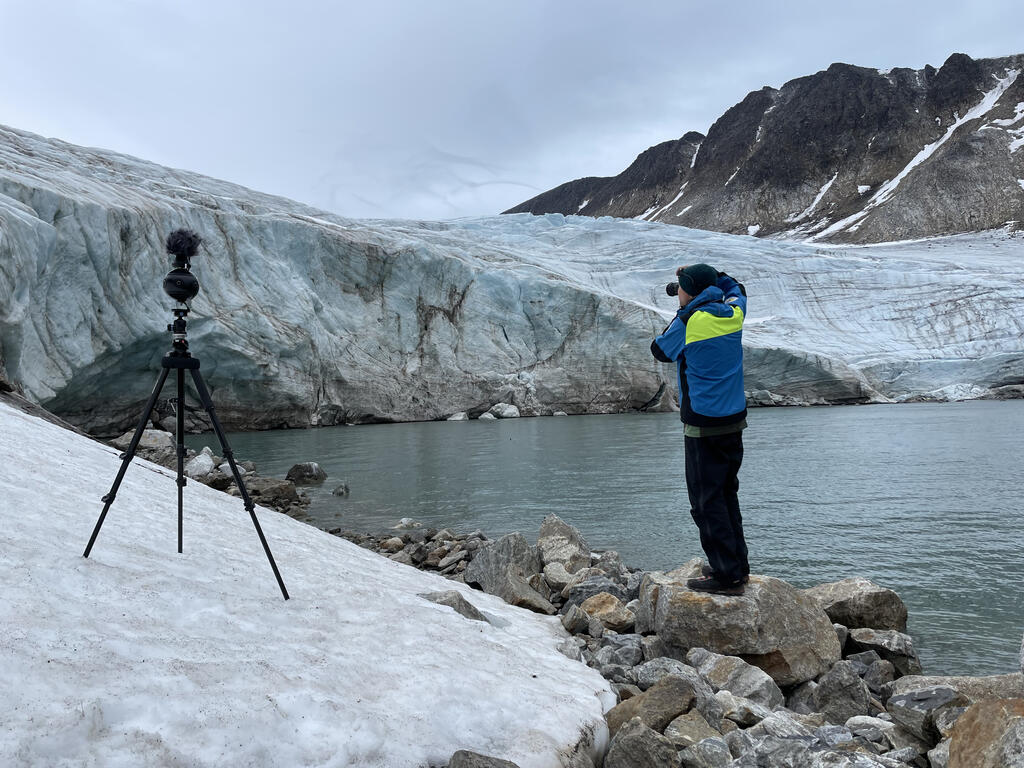
The new project
Making a digital visit to Svalbard is already possible via the research project's open database, where the visitor can easily compare photographs from the 1890s with photos of the same glacier taken in 2012-2022. An additional dimension is to "step into" the arctic environment via a VR headset and experience a 360 degree view where a digital version of Tyrone Martinsson talks about the environment and shows the 120-year-old photographs. The educational comparison shows the impact of climate change in a clear way, but the visitor also experiences something more through the XR experience. That the visitor experiences the place's unique beauty, sounds and the feeling of being in the Arctic and the effect of being able to look around from several angles leaves a greater impression than the images on the computer screen.
"The new project partly builds on the work we have done within Extended Rephotography. The database that we have built up with all photographic material, films, observations and source material is part of the project's results and the new project is about how this material should be used and made available,"
says Martinsson
If funding goes through, the new project is planned to start in the spring of 2024 and extend three years ahead with at least one fieldwork, which means yet another expedition to Svalbard.
"We know this area well, now it's about refining using the tools we have. At the moment we can only imagine the next step in technological development but can only work with what is available to us. That is "prosumer equipment". 360-degree underwater drones are, for example, an opportunity that we do not have today, perhaps during the course of the project they can become cheaper and thus possible to implement. However, I am most curious about Apple's VR glasses, Vision Pro. How could our project and other artistic research be published in their platform?"
says Gorki Glaser-Müller
The work on the new research application is being done this time together with Universeum and the idea is to move from VR headsets to digitally visiting the environment in Svalbard via the judgment's 360 projection. Martinsson believes that this opens up opportunities to meet a larger audience and thereby make more use.
- Since we work with educators right from the start, the idea is there from the beginning about how we can use technology as an educational tool to get the public to understand climate change and also to get involved.
Glaser-Müller agrees that part of the project's aim from the start has been to create change through commitment and that accessibility combined with a certain amount of entertainment creates good conditions for this.
Do you want to bring ideas to life with the help of a network where academia, art, public actors and business meet? Want to explore how visualization can transform your concepts into experiences that touch? If these questions capture your curiosity, then Visual Arena is the perfect network for you to start experimenting and finding new answers. If you are interested in innovating with us, get in touch Martin Högenberg below or register your interest via the web. We are aimed at everyone who is curious about what innovation and visualization can do to meet challenges.
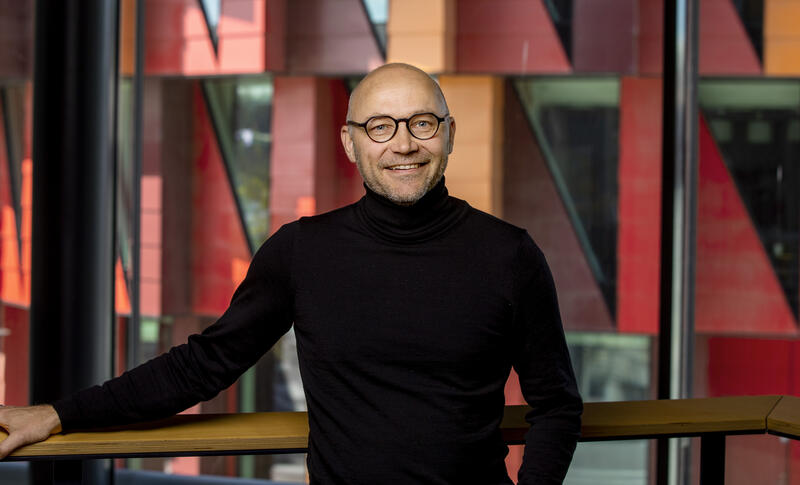
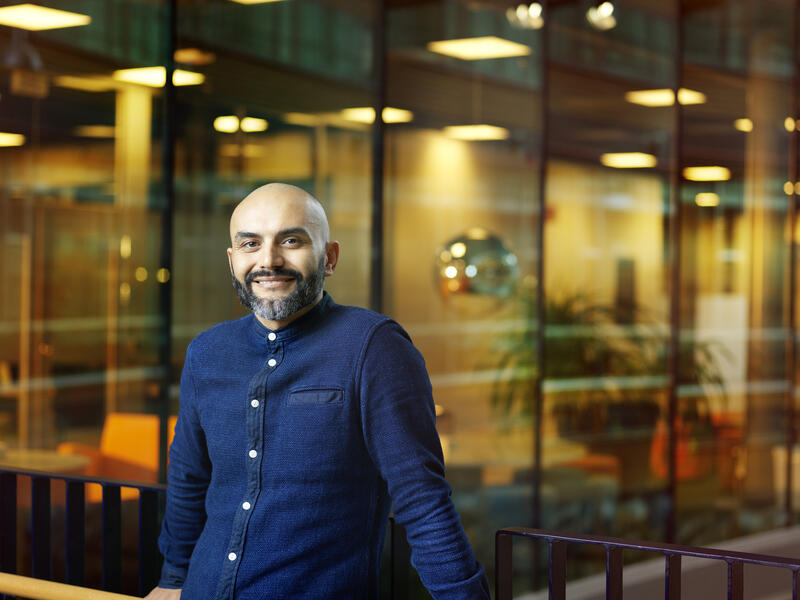
Gorki Glaser-Müller
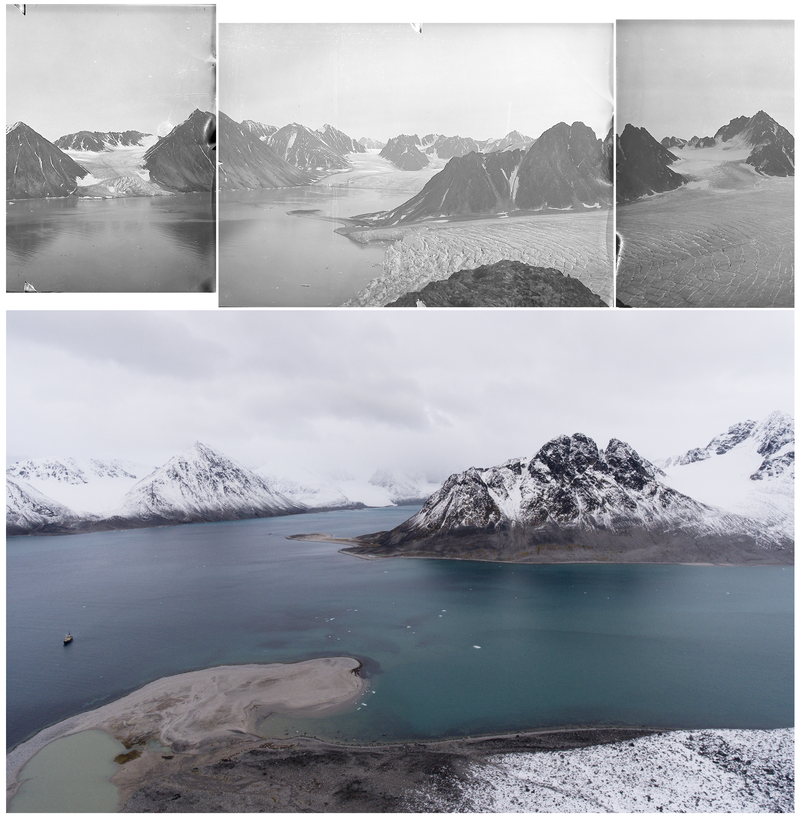
Expanded rephotography
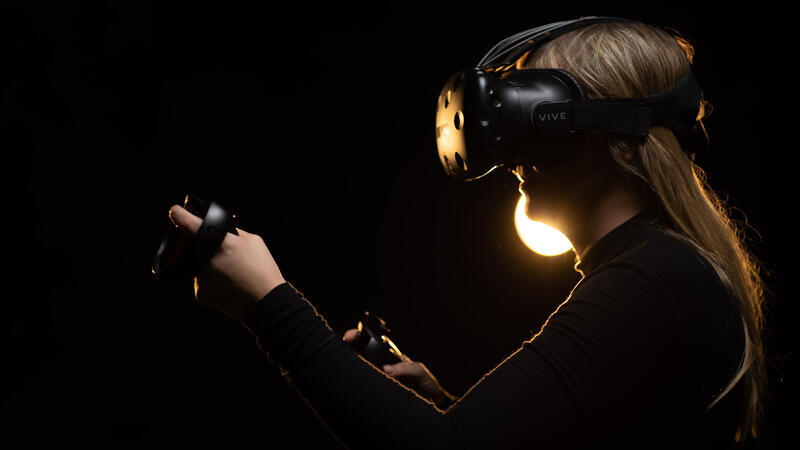
Narrative XR Lab
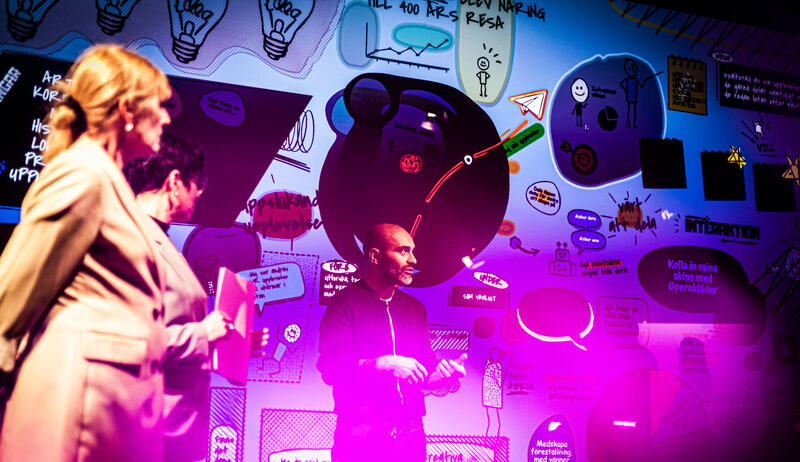
Create projects
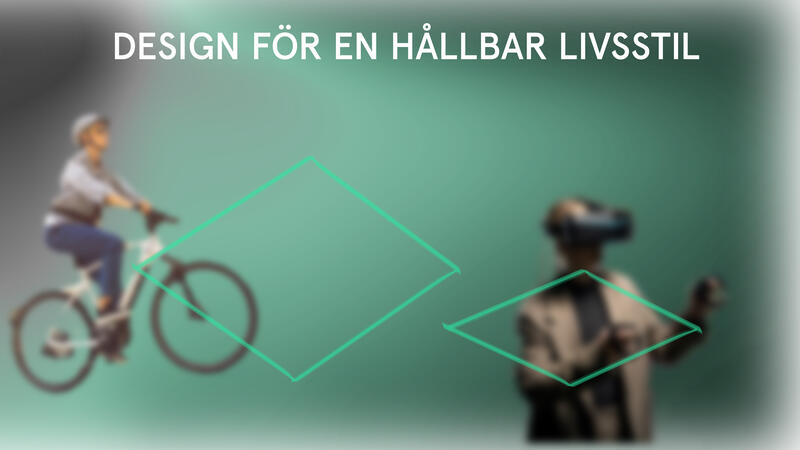
VR as an Empathy Machine: Designing for a Sustainable Lifestyle
Välkommen på våra kostnadsfria event
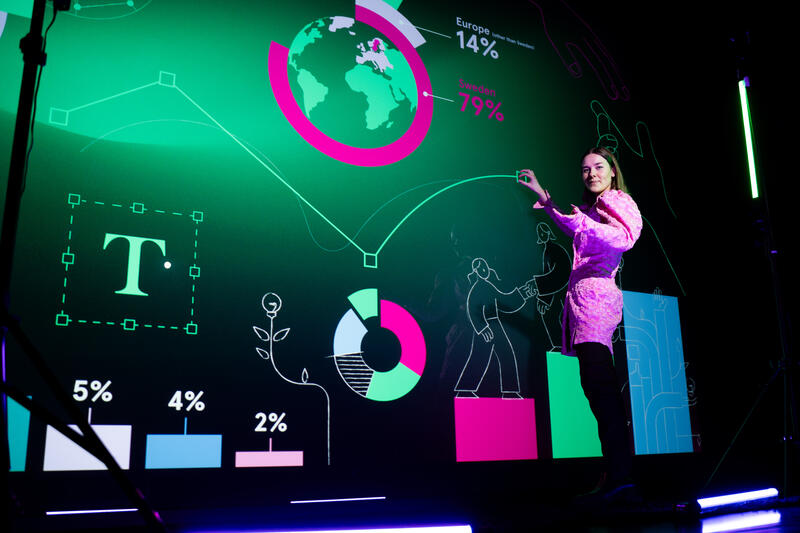
The sustainability reporting of the future is visual and spelled CSRD!
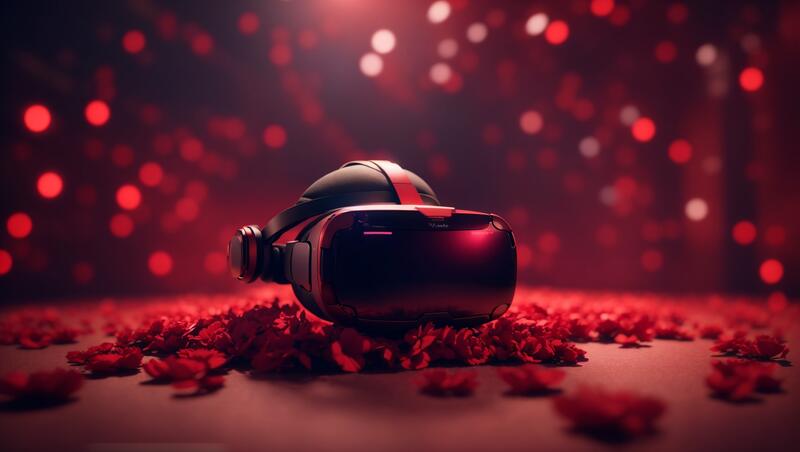
Visual Arena Spektrum – An experience of the power of visualization
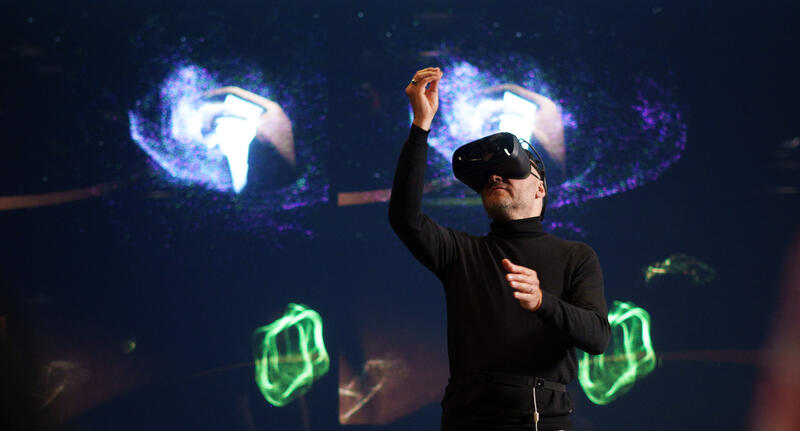
Explore Virtual Worlds Event Series 2
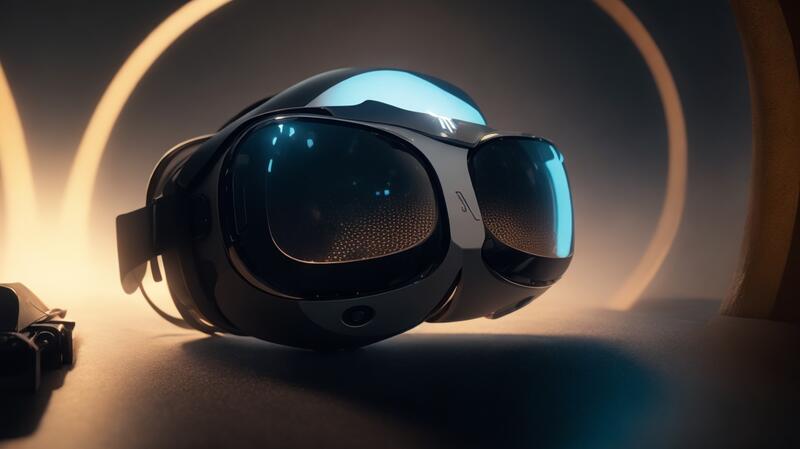
Explore Virtual Worlds event series 3
